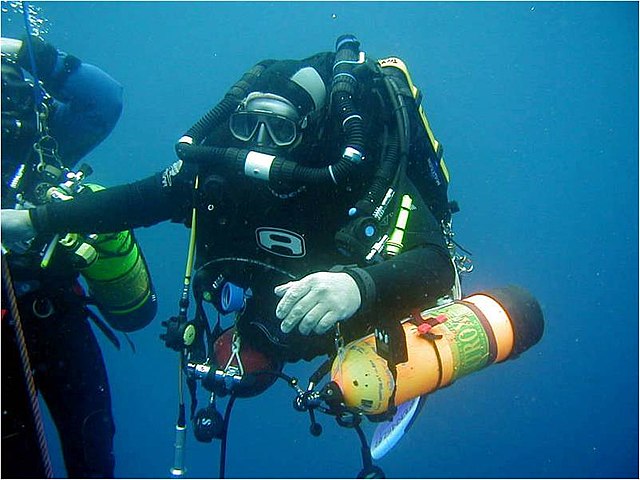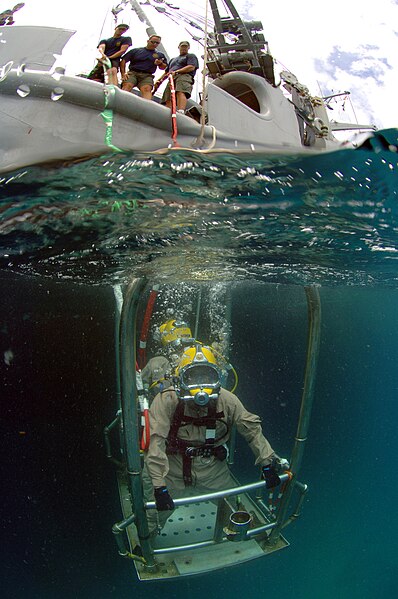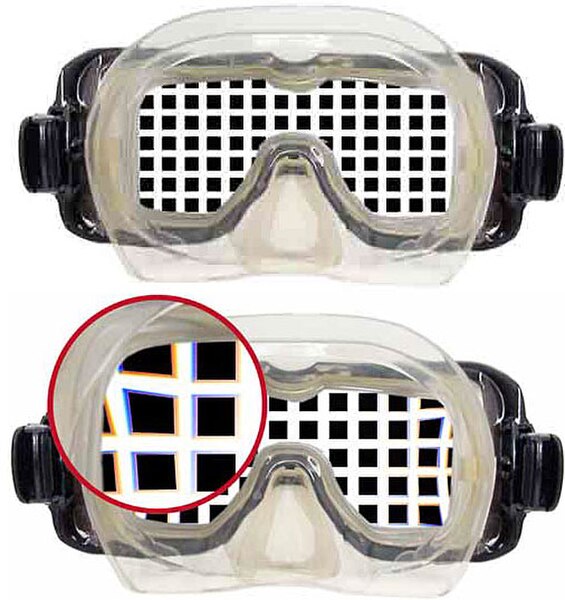Deep diving is underwater diving to a depth beyond the norm accepted by the associated community. In some cases this is a prescribed limit established by an authority, while in others it is associated with a level of certification or training, and it may vary depending on whether the diving is recreational, technical or commercial. Nitrogen narcosis becomes a hazard below 30 metres (98 ft) and hypoxic breathing gas is required below 60 metres (200 ft) to lessen the risk of oxygen toxicity.
Scuba diver using a rebreather with open circuit bailout cylinders returning from a 600-foot (180 m) dive.
Technical divers preparing for a mixed-gas decompression dive. Note the backplate and wing setup with side mounted stage tanks containing EAN50 (left side) and pure oxygen (right side).
Closed circuit rebreather (AP Diving "Inspiration").
Underwater diving, as a human activity, is the practice of descending below the water's surface to interact with the environment. It is also often referred to as diving, an ambiguous term with several possible meanings, depending on context.
Immersion in water and exposure to high ambient pressure have physiological effects that limit the depths and duration possible in ambient pressure diving. Humans are not physiologically and anatomically well-adapted to the environmental conditions of diving, and various equipment has been developed to extend the depth and duration of human dives, and allow different types of work to be done.
Surface-supplied divers riding a stage to the underwater workplace
Mild barotrauma to a diver caused by mask squeeze
Views through a flat mask, above and below water
Recreational breath-hold divers in basic equipment with floats and catch bags suitable for collecting lobster or shellfish







